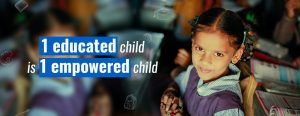In the last several years social media has taken the world by storm. Not restricted to a particular age group or ethnicity, social media has succeeded in the allowing the world to connect in a way never seen before. Suddenly the world of communications has opened up surpassing geographical and technological barriers, and everyone is jumping on the bandwagon to take advantage of it.
But social media is possibly most advantageous to the corporate sector as it allows businesses a platform to spread their message, gain visibility and increase recall value amongst a massive audience.
NGOs (Non-Governmental Organisations) especially rely on social media heavily to gather support for their cause. Usually constrained by small budgets NGOs cannot spend heavily on advertising to spread awareness of their message and inspire donors to invest in their brand.
Social media has several distinct advantages for NGOs:
- NGOs use their free social media profiles as an additional platform to keep their audience up-to-date on the latest information regarding their organisation/cause, but in a more vivacious, interesting manner than their corporate website.
- Aside from illustrations and status updates, NGOs have also wholeheartedly embraced the powerful audio-visual medium to create inspiring and hard-hitting messages, that social media gives them a platform to promote.
- To non-profit organisations social media is a cost-effective yet the most extensive medium to promote news and updates, invite engagement, build an audience and petition for funding all in one place.
- Instead of needing to restrict their awareness campaigns to only one platform due to budgetary concerns, NGOs can tailor make their campaigns to suit multiple social media platforms like Facebook vs Flickr, reaching out to a diverse audience, across different interests, geographical locations and age groups.
With so much riding on the need to differentiate themselves from their competition, having a great social media strategy is crucial to a NGOs’ success. Today social media is on an upswing, with the world just discovering the many different ways it can be used to transform a business, propagate an idea, and above all incite change. In fact, with the advantages social media offers, it looks to be a god-send for the NGO industry.












